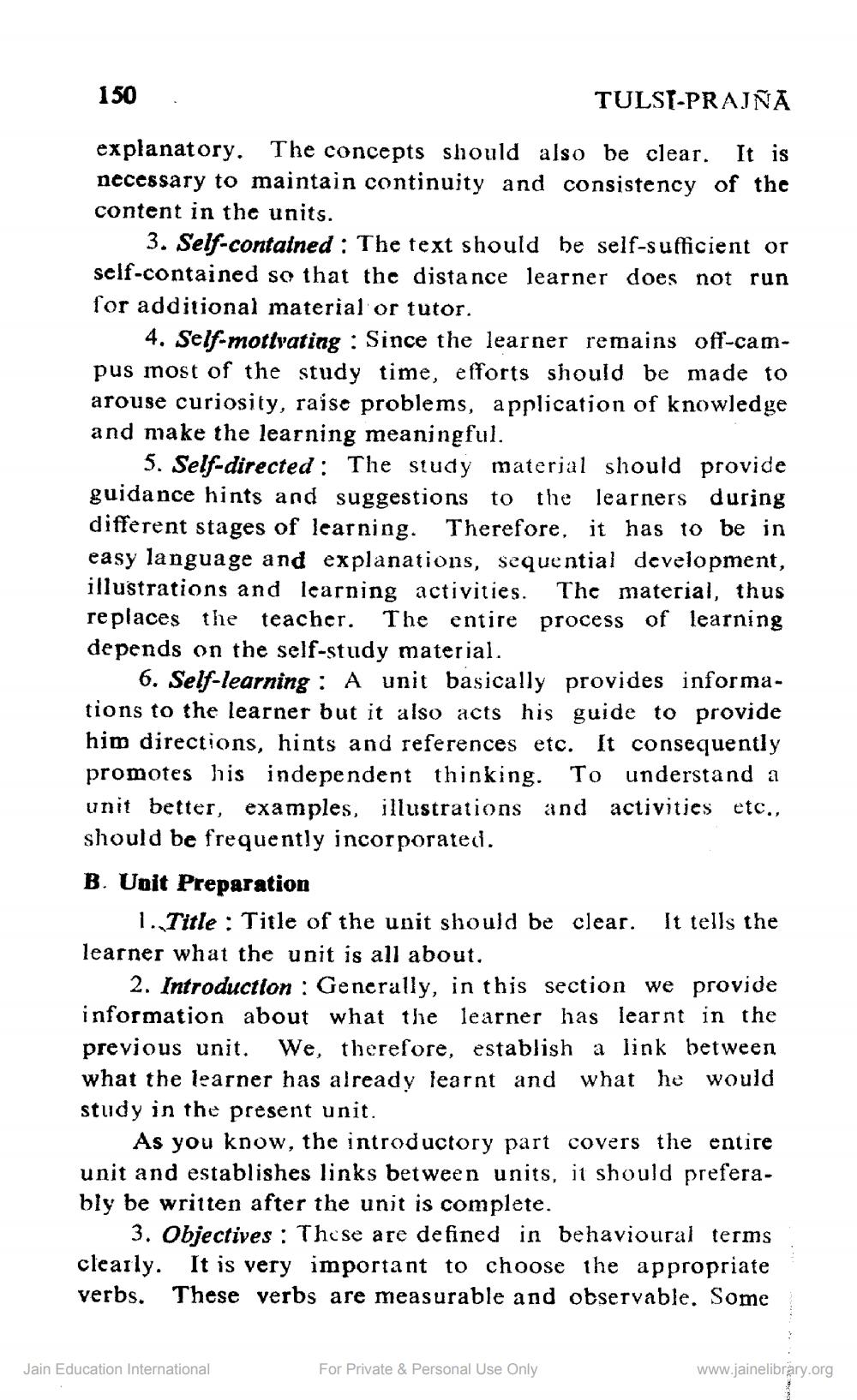________________
150
TULSI-PRAINĀ
explanatory. The concepts should also be clear. It is necessary to maintain continuity and consistency of the content in the units.
3. Self-contained : The text should he self-sufficient or self-contained so that the distance learner does not run for additional material or tutor.
4. Self-motivating : Since the learner remains off-campus most of the study time, efforts should be made to arouse curiosity. raise problems. application of knowledge and make the learning meaningful.
5. Self-directed: The study material should provide guidance hints and suggestions to the learners during different stages of learning. Therefore, it has to be in easy language and explanations, sequential development, illustrations and learning activities. The material, thus replaces the teacher. The entire process of learning depends on the self-study material.
6. Self-learning : A unit basically provides informations to the learner but it also acts his guide to provide him directions, hints and references etc. It consequently promotes his independent thinking. To understand a unit better, examples, illustrations and activities etc., should be frequently incorporated. B. Unit Preparation
1. Title : Title of the unit should be clear. It tells the learner what the unit is all about.
2. Introduction : Generally, in this section we provide information about what the learner has learnt in the previous unit. We, therefore, establish a link between what the learner has already learnt and what he would study in the present unit.
As you know, the introductory part covers the entire unit and establishes links between units, it should preferably be written after the unit is complete.
3. Objectives: Those are defined in behavioural terms clearly. It is very important to choose the appropriate verbs. These verbs are measurable and observable. Some
Jain Education International
For Private & Personal Use Only
www.jainelibrary.org




